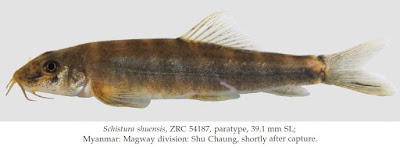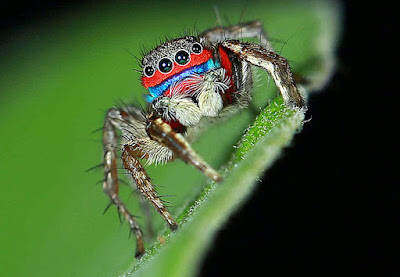 |
Ansonia khaochangensis
Grismer, Wood, Aowphol, Cota, Grismer, Murdoch, Aguilar & Grismer, 2016
|
Abstract
Subsequent to the Miocene (approximately 35 Mya), Borneo has served as an insular refuge and a source of colonization for a broad range of species emigrating to others parts of Sundaland. A phylogeny-based historical biogeographical hypothesis for the Stream Toad genus Ansonia supports multiple instances of an out-of-Borneo scenario. An ancestral range estimation indicates that in situ speciation of Ansonia on the island of Borneo during the Late Miocene and Pliocene (approximately 2–13 Mya) eventually resulted in an invasion of the Philippines, Sumatra, and two independent invasions of the Thai-Malay Peninsula. When collecting material for the biogeographical analysis, a new species of Ansonia, Ansonia khaochangensis sp. nov. was discovered in a limestone cave from the Khao Chang karst tower in Phangnga Province, in southern Thailand. Ansonia khaochangensis sp. nov. can be differentiated from all other species of Ansonia by having a unique combination of morphological and colour pattern characteristics. Phylogenetic evidence based on the mitochondrial genes 12S and 16S indicates that it is nested within a clade of other species distributed north of the Isthmus of Kra. The cave lifestyle of this new species is a unique and a significant departure from lotic environments common to most other species of Ansonia. The reproductive biology of this species is unknown.


Ansonia khaochangensis sp. nov.
Cave-dwelling Stream-Toad
Diagnosis. Ansonia khaochangensis sp. nov. can be differentiated from all other species of Ansonia by the combination of the following characters: maximum SVL of 35.5 mm (34.0–35.3 mm) for females and 32.0 mm (31.9–32.0 mm) for males; snout projecting beyond lower jaw; tympanum visible; vocal sac opening on right; no white or yellow tubercle at rictus; no tuberculate, interorbital ridges; finger and toe tips rounded, bulbous but not forming discs; first finger not reaching disc of second; webbing formula on foot I 1, II ½–2, III 1½–2, IV 2–2, V 1; tarsal ridge present; inner and outer metatarsal tubercles present; submandibular tubercles absent; dorsal tubercles present but small, low, and rounded; no dorsolateral row of enlarged tubercles on sides or back; no oblique flap of skin on either side of vent; abdomen and gular region coarsely granular; iris black; no light spots on the gular region or abdomen; no suborbital or postorbital white markings; no light interscapular spot; no light crossbars on hind limbs, no light vertebral stripe. These character states are scored across all species of Ansonia in Table 4.

Distribution. Ansonia khaochangensis sp. nov. is known only from the type locality at Takua Pa District, Phang Nga Province, southern Thailand (Fig. 1).
Natural history. Ansonia khaochangensis sp. nov. is only known from the Khao Chang tower karst formation that rises precipitously to an elevation of 125 m and frames the northwest border of the city of Phang Nga (Fig. 6). Along the southeast face of the karst formation is the massive Phung Chang Cave that has a subterranean water system that runs beneath the karst tower. This southeast face is also riddled with several smaller caves. Approximately 0.5 km southwest of the mouth of Phung Chang Cave is a very small opening at the base of the karst tower that winds its way inward for approximately 20 m wherein we found A. khaochangensis sp. nov. (Fig. 6). During the day, specimens were found only within the recesses of the cave on the vertical cave walls as high as 3 m above the cave floor. To escape, toads were able to move sideways up the cave walls in an attempt to wedge themselves into narrow cracks near the celling. Toads were also observed in the cave at night but would venture out to climb on the outside of the karst tower. Some specimens were found as high as 10 m above the forest floor both on the karst and sitting on the leaves of small plants growing out of the karst. The distinctive, virtually monochromatic, brown coloration of this species appears to be a result of substrate matching in that frogs are reasonably well-camouflaged on the limestone substrate. We interpret this as an indication that this microhabitat is not something that is occasionally utilized and that this genus, which has a lotic life style elsewhere, has adapted to this microhabitat over a long period of time in that it split off from its sister lineage approximately 5.5 Mya (Fig. 3).
The reproductive biology of this species is completely unknown. Most other Ansonia require fast-moving lotic systems and all require water for tadpole development. We assume that there are other sources of underground water that these toads must be using for reproduction because there are no above-ground systems nearby that we could find. Fieldwork is currently being planned to investigate this species’ presumably unique reproductive biology.
Etymology. The specific epithet khaochangensis is in reference to the type locality of this species in the Khao Chang tower karst formation.
L. Lee Grismer, Perry L. Wood Jr, Anchalee Aowphol, Michael Cota, Marta S. Grismer, Matthew L. Murdoch, Cesar Aguilar and Jesse L. Grismer. 2016. Out of Borneo, Again and Again: Biogeography of the Stream Toad Genus
Ansonia Stoliczka (Anura: Bufonidae) and the Discovery of the First Limestone Cave-dwelling Species.
Biological Journal of the Linnean Society. DOI:
10.1111/bij.12886














































